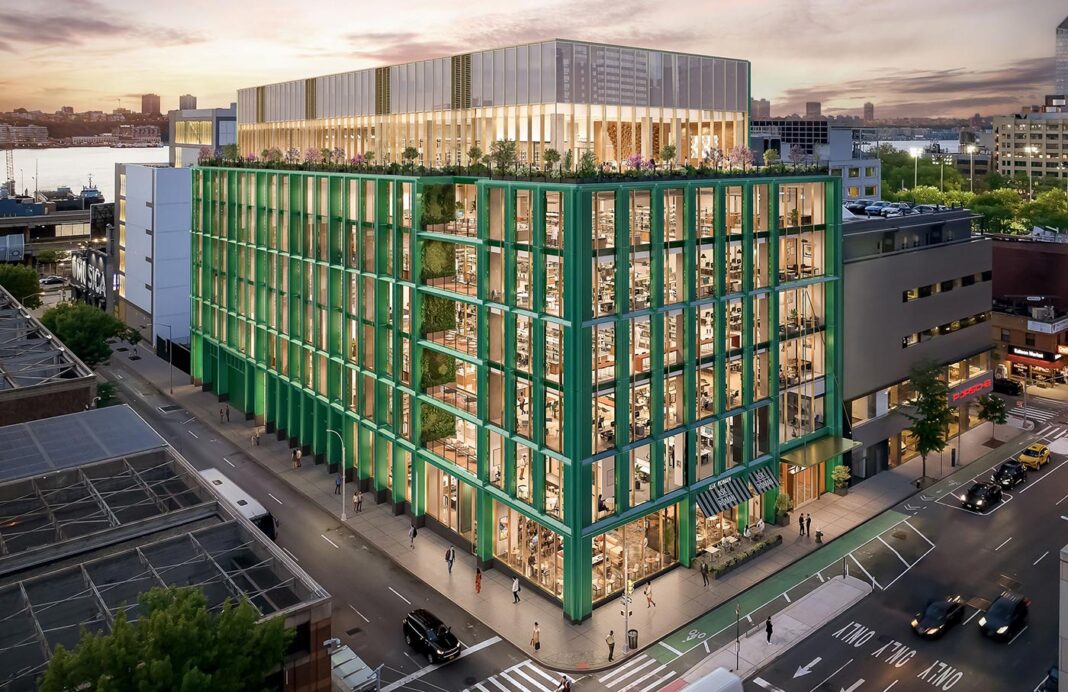Even in the current challenging market, dozens of biopharma companies are looking for additional space to accommodate operations that are growing or expected to grow. At the same time, some companies are looking to downsize their digs. Whether they plan to expand or contract their laboratories and offices, biopharma companies are weighing many more factors than the one cited in that old saw about real estate. You know: location, location, location.
The shift reflects the biopharma industry’s slowdown following the rush of companies and institutions scrambling to address the COVID-19 pandemic by plunging head-first into rapid drug and vaccine development. “COVID-19 created what I call a sugar high,” Robert Coughlin, managing director in the life sciences industry practice of commercial real estate firm JLL, told GEN.

Managing Director, JLL
“When we were facing a global pandemic, and the most important thing to the entire global economy and the well-being of people on earth was to find vaccines, we got a lot of attention,” Coughlin explained. “People would invest in life sciences funds when they weren’t traditional life sciences investors. Developers would build [life sciences facilities] when they weren’t traditional life sciences developers. Now, we’re coming out of a correction.”
Supply and demand
The life sciences real estate market’s challenges—and signs of a comeback—are discussed by JLL in its 2023 Life Sciences Industry and Real Estate Perspective. The report acknowledges that demand for life sciences space by startups slowed to over 10 million square feet of space as of midyear 2023 from 25 million in 2021, as capital became harder and costlier to obtain due to rising interest rates.
Demand for life sciences space is expected to increase, Coughlin said, as early-stage companies benefit from the over $22 billion in capital raised collectively since 2021 by the top 20 venture capital (VC) firms focused on life sciences investment.
Companies searching for space will face a growing supply of life sciences sites to choose from—but mostly in the largest regional clusters. The national pipeline of life sciences space getting built is three times larger than it was in 2019.
Of the 37 million square feet of investor-owned laboratory space under development in the United States, 63% is in the Boston/Cambridge region or the San Francisco Bay Area, JLL found. By contrast, only 10% of current stock is in Los Angeles, Raleigh-Durham, and the Washington DC/Maryland portion of the BioHealth Capital Region.
The “bulk of the market”
Owners and developers—and the real estate firms representing them—are encouraged by a jump in small biopharma companies seeking up to 30,000 square feet of space. They accounted for 82% of lease deals signed in the first half of 2023, up from 65% a year earlier.
Among developers eager to draw smaller biotech companies as well as larger ones are the Georgetown Company and Beacon Capital Partners. The two are teaming up to develop 707 Eleventh Avenue in New York City, a 185,000-square-foot building set to rise on Manhattan’s West Side with support from the New York City Industrial Development Agency (NYCIDA), which is managed by the nonprofit New York City Economic Development Corporation (NYCEDC).
The developers say that 707 Eleventh Avenue would be the first new life sciences property built for that use in a prime section of Manhattan in more than a decade.
Jonathan Schmerin, managing principal with the Georgetown Company, told GEN that developers envision an anchor tenant of between 75,000 and 100,000 feet, plus several tenants leasing between 15,000 and 50,000 square feet—the “bulk of the market,” in his estimation. In partnership with the NYCIDA and NYCEDC, 707 Eleventh Avenue will also include “graduation suites” for early-stage life sciences companies ranging from 5,000 to 10,000 square feet, to be built on a speculative or “spec” basis.

Managing Principal
The Georgetown Company
“Having a modern building with amenities, with all electric operations, with floor plates that are of a smaller size to address the bulk of the New York market, which consists of earlier-stage life sciences companies, we think, allows for us to deliver a unique A-plus product,” Schmerin asserted.
New York City and its suburbs have seen a parade of new life sciences developments emerge in recent years, reflecting industry growth, developer interest in converting older commercial buildings, and incentives from New York City and New York State authorities. “We believe that the West Side is ultimately going to be the winner as to where biotech in New York will ultimately grow,” Schmerin said, given its transportation accessibility to life sciences talent across the Hudson River in New Jersey, its walking distance from Midtown Manhattan, and zoning that allows life sciences uses as-of-right in manufacturing areas.
The West Side also enjoys a growing critical mass of life sciences institutions, properties, and companies.
The New York Mount Sinai Health System’s recently opened Discovery and Innovation Center anchors the Georgetown Company’s 787 Eleventh Avenue, a mixed-use redevelopment of the original Packard Motors Building. The West Side is also home to Taconic Partners’ West End Labs (a research laboratory complex at 125 West End Avenue) and HiberCell (a cancer therapy developer at Taconic’s Hudson Research Center, 619 West 54th Street).
Talent competition
Analysts at commercial real estate firm CBRE have been keeping an eye on the shrinking supply of talent and escalating costs in the largest regions for life sciences activity. According to Matt Gardner, CBRE’s advisory sciences leader, these trends have many companies contemplating up-and-coming regions just beyond those ranked in GEN’s annual A-List of Top 10 U.S. Biopharma Clusters.

Lead, Americas Life Sciences Leader, CBRE
“More options are available to growing companies, creating greater flexibility for growing companies,” Gardner said. “There’s been so much investment in both coasts—in particular the Bay Area, San Diego, Boston, and North Carolina—that their talent markets are tapped out in the short term.”
Gardner remarked that when growing companies have to compete for scarce talent, one of the things they do is look at emerging markets. He cited several examples: Houston, Atlanta, Denver/Boulder, and Indianapolis.
Growth prospects
As of August, according to CBRE research, VC funding for life sciences companies rose to $4.6 billion in Q3 2023, the second consecutive quarter-to-quarter increase, bringing the Q1–Q3 2023 total to $12.7 billion. However, early-stage companies were projected to complete fewer VC funding rounds in 2023 than in any of the previous six years. Early startups in phases up to Series A saw a growing share of funding—to 41% in Q1–Q3 2023 from 39.5% in all of 2022—while funding for later-stage companies has decreased. Series B fundings have fallen 10% since 2020.
That slowdown helps explain why life sciences employment from January to August in 2023 rose just 1.4%, though above the 1% growth in total nonfarm employment. Smaller financing deals and slowing employment mean slower growth trajectories, resulting ultimately in companies leasing or buying smaller spaces than they might have otherwise.
“If you’re a seed to Series B company, you might look for 25,000 square feet today rather than the 100,000 square feet you might have been looking for two years ago,” Gardner suggested. “If you’re raising the $20 million or $40 million that we’re seeing in some of these headlines today, instead of $100 million, you’re probably thinking differently about your growth rate. We think that means the industry’s returned to what was once more the norm.”
One source of optimism for life sciences property owners, and the real estate companies that represent them, is a belief that the initial public offering (IPO) market will finally bounce back in 2024 after more than two years of companies staying away or settling for smaller-than-planned offerings followed by declining share prices.
That optimism stems from a spurt in IPOs during the second half of this year, as 11 companies went public as of November 28—compared with just 8 in the first half of this year. This year barely surpassed the 17 IPOs of 2022, and fell well short of the 158 of 2021. Acelyrin scored 2023’s biggest IPO at deadline, raising $621 million gross proceeds ($573.7 million net proceeds) in May.
“I think it’s going to come back sooner than a lot of people anticipate,” Coughlin maintained. “If people are hiring, they’re ultimately going to need more space, which will lead to more tenant demand for space—and that’s good for the real estate industry.”


